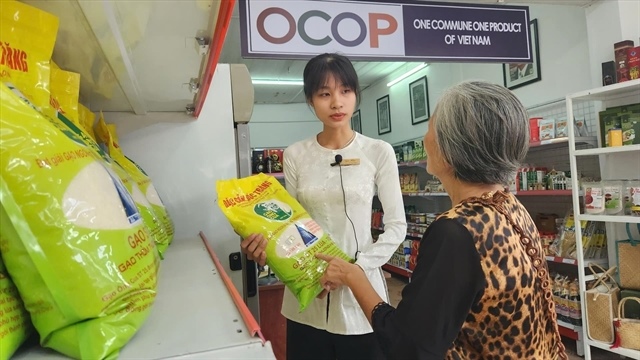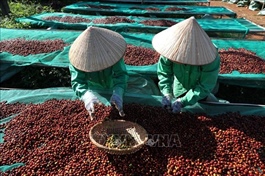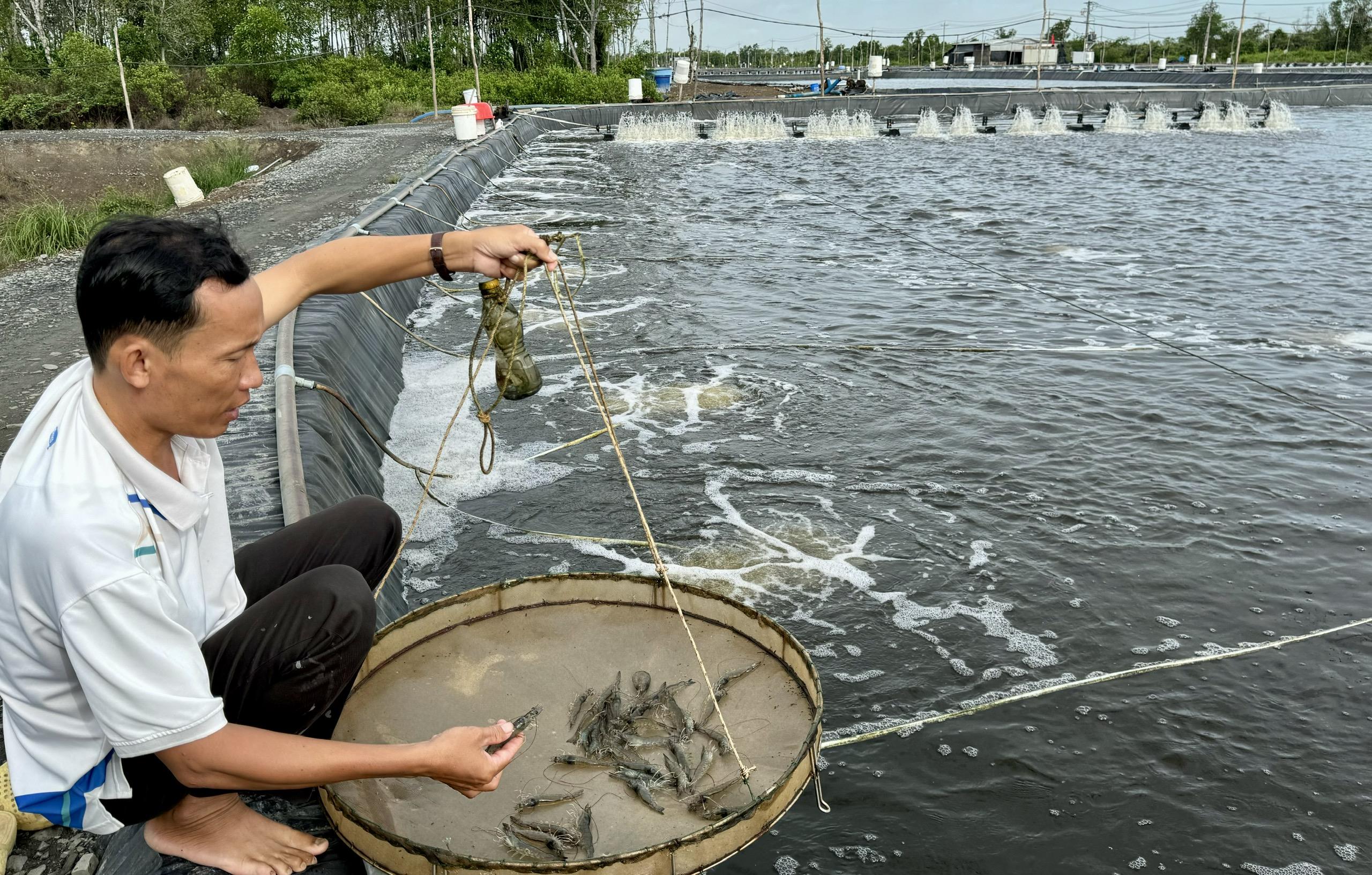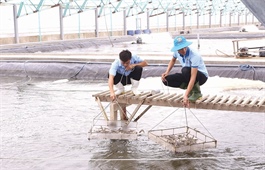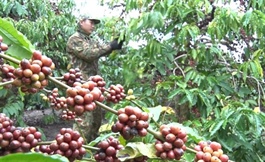Shrimp exports grow in the first month of 2025
Shrimp exports grow in the first month of 2025
According to data from the Việt Nam Association of Seafood Exporters and Producers (VASEP), shrimp products recorded a 13 per cent increase in export value in January 2025, reaching a total of $273.3 million.

Processing export shrimp. Việt Nam's shrimp products recorded a strong 13 per cent increase in export value in January 2025, reaching a total of $273.3 million. VNA/VNS Photo |
Việt Nam's shrimp export industry has kicked off the year 2025 with impressive growth, solidifying its position as a key player in the domestic seafood export market.
According to data from the Việt Nam Association of Seafood Exporters and Producers (VASEP), shrimp products recorded a strong 13 per cent increase in export value in January 2025, reaching a total of $273.3 million.
This growth accounted for 35.3 per cent of Việt Nam's total seafood export turnover, contributing significantly to the country's overall seafood export performance.
In total, Việt Nam's seafood export turnover in January 2025 amounted to $774.3 million, reflecting a modest 3.3 per cent increase compared to the same period in 2024.
In 2025, the shrimp industry aims to gain the export value of $4.3 billion, an increase of about $300 million year on year, according to Trần Đình Luân, deputy director general of the Directorate of Fisheries, under the Ministry of Agriculture. It also expects to see strong growth in exports to potential markets, such as Australia, the Middle East, the UK and South Korea.
Luân remarked that in 2025, there were more positive signs in shrimp export, including the recovery of major markets including the US, Japan and the EU, as Việt Nam's sales were expected to rise. Notably, changes in US tax policies for countries like Ecuador and China could create export opportunities for Việt Nam.
VASEP cited information from Rabobank (headquartered in the Netherlands) saying that the global shrimp market is currently undergoing a rebalancing phase, as leading shrimp-producing countries have begun to slow down their production growth.
This is expected to narrow the gap between supply and demand, helping to stabilise shrimp prices in the first half of 2025.
This trend could be beneficial for shrimp prices, particularly as demand from major markets such as the US and the European Union (EU) is expected to improve.
However, China - one of Việt Nam’s key shrimp export markets - faces a decline in domestic consumption. The shifting spending habits of China’s middle class, coupled with increased competition from cheaper seafood alternatives, has contributed to a decline in white shrimp consumption, slowing demand for Vietnamese shrimp in this market.
The Vietnamese shrimp industry is also grappling with other challenges. A significant shortage of raw shrimp is forecast until the end of the first quarter of 2025, which is expected to put pressure on shrimp processing companies.
With raw shrimp prices on the rise, these companies face the difficult task of managing production costs while competing with cheaper shrimp imports from other countries.
In response to these challenges, VASEP has urged the Vietnamese government, the Ministry of Foreign Affairs, and the Ministry of Industry and Trade to prioritise bilateral negotiations and targeted trade promotion activities in key foreign markets. These efforts could help unlock new opportunities and improve the competitiveness of Việt Nam's shrimp exports.
Chairman of Sao Ta Food JSC, Hồ Quốc Lực, stressed that the appeal of Vietnamese shrimp products was due to their attractive appearance and consistent quality.
Vietnamese companies strategically focused on producing large, whole tiger shrimp and boiled raw shrimp for the Chinese market - products that are highly popular with Chinese consumers and face little competition.
Additionally, enterprises have shifted away from individual quick freezing (IQF) shrimp exports to the US, instead focusing on more value-added products such as boiled, fried or breaded shrimp. IQF shrimp is the dominant product of Ecuador and India, which also offer cheaper prices.
The communications director at VASEP, Lê Hằng, noted that the global seafood market in 2025 was expected to experience several fluctuations, including shifts in consumer habits, tariff policies and supply-demand dynamics. These factors could create challenges for Vietnamese exports, particularly in large markets like China and the US.
However, the growing demand from ASEAN markets and supportive tariff policies from key trade partners would provide opportunities for the industry to maintain its growth momentum.
The resilience of Việt Nam's shrimp industry in 2024 laid the groundwork for a strong start to 2025.
Despite facing challenges in global demand, the industry was able to capitalise on the recovery of shrimp demand in key markets.
Việt Nam’s shrimp exports to mainland China and Hong Kong in 2024 surged by 39 per cent, reaching $843 million, which allowed this market to surpass the US as Việt Nam's largest shrimp export destination.
The shrimp exports to the US also showed an upward trend, reaching $756 million, an 11 per cent increase compared to the previous year.
In addition to the US and China, Vietnamese shrimp continued to maintain a strong presence in markets like Japan, South Korea and the EU.
The industry's reputation for high-quality, value-added shrimp products, combined with the advantages provided by free trade agreements, helped accelerate exports to new markets such as the UK, Canada, Australia and Singapore.


